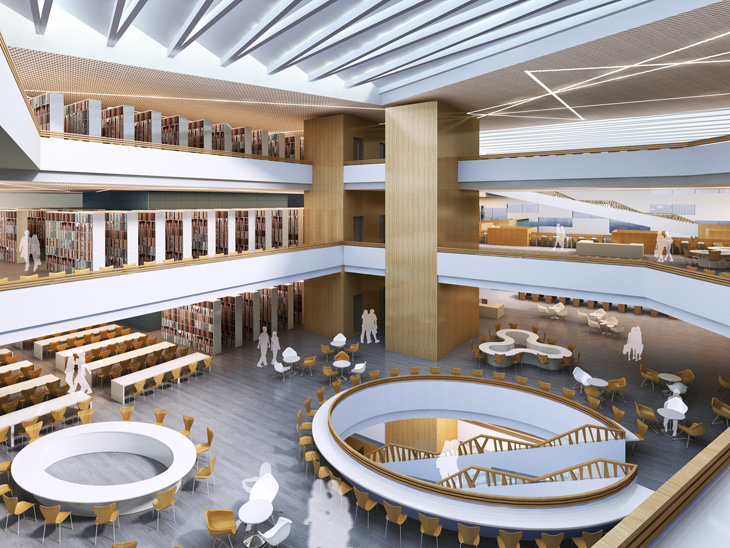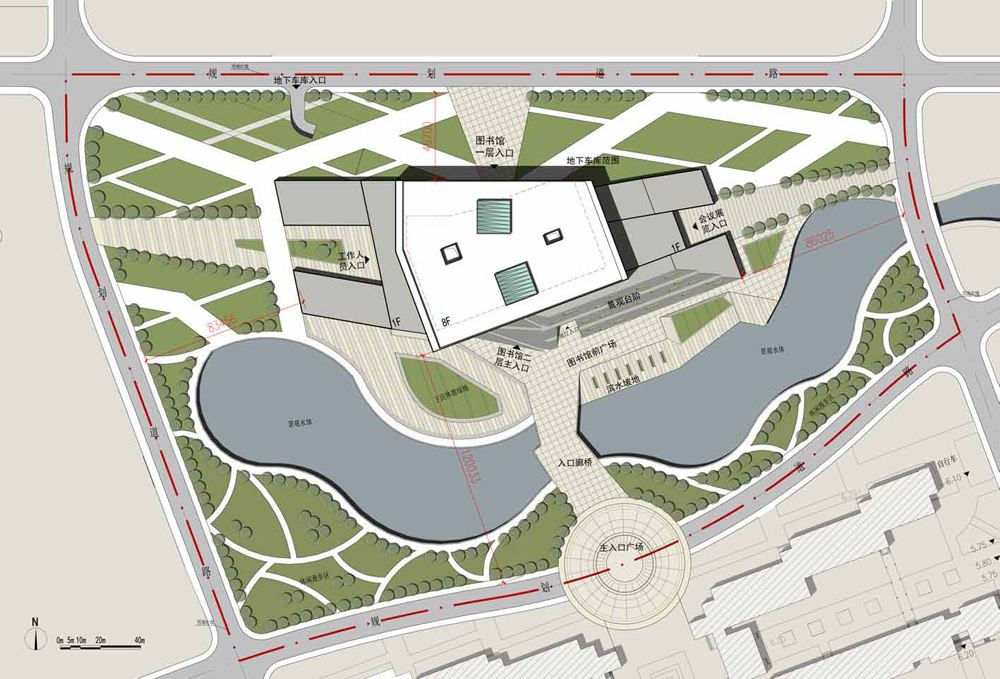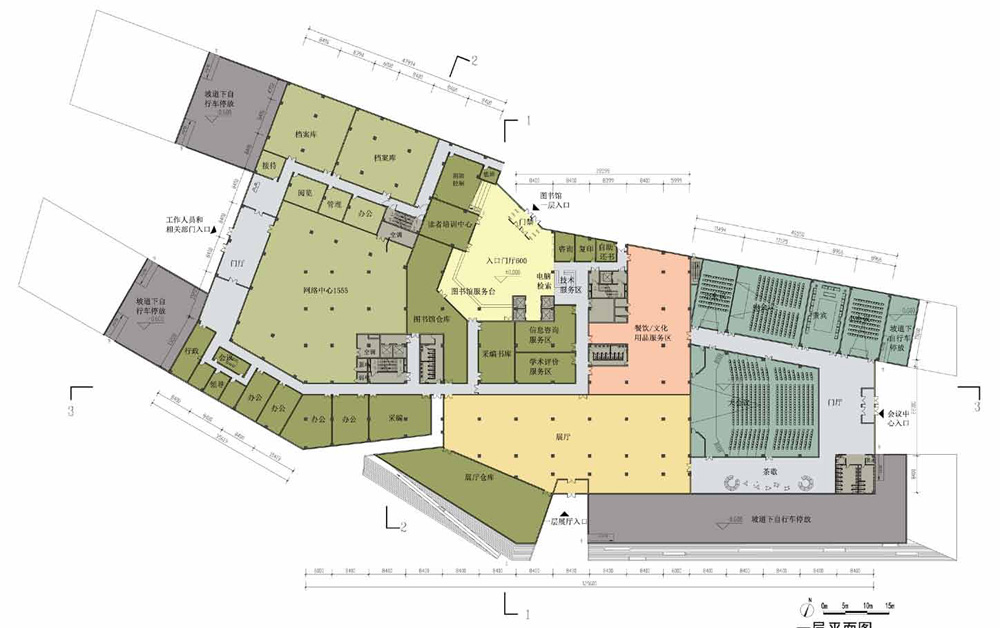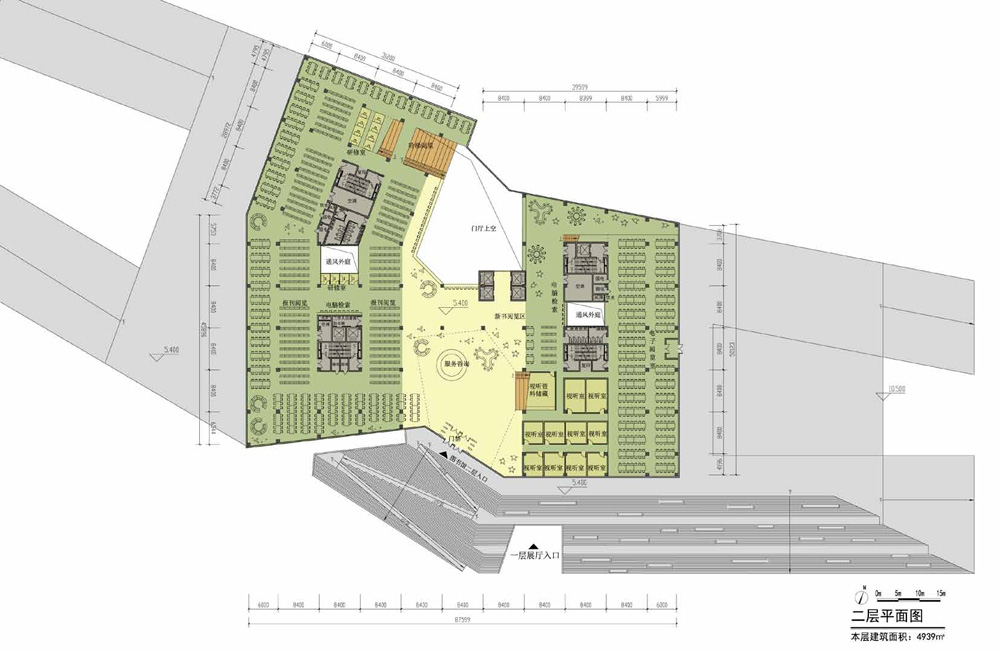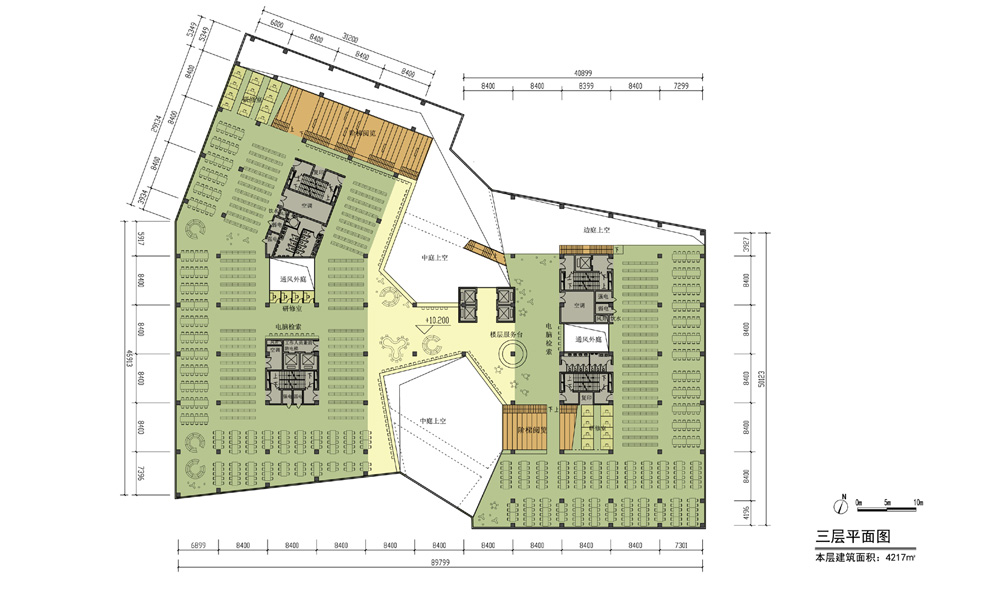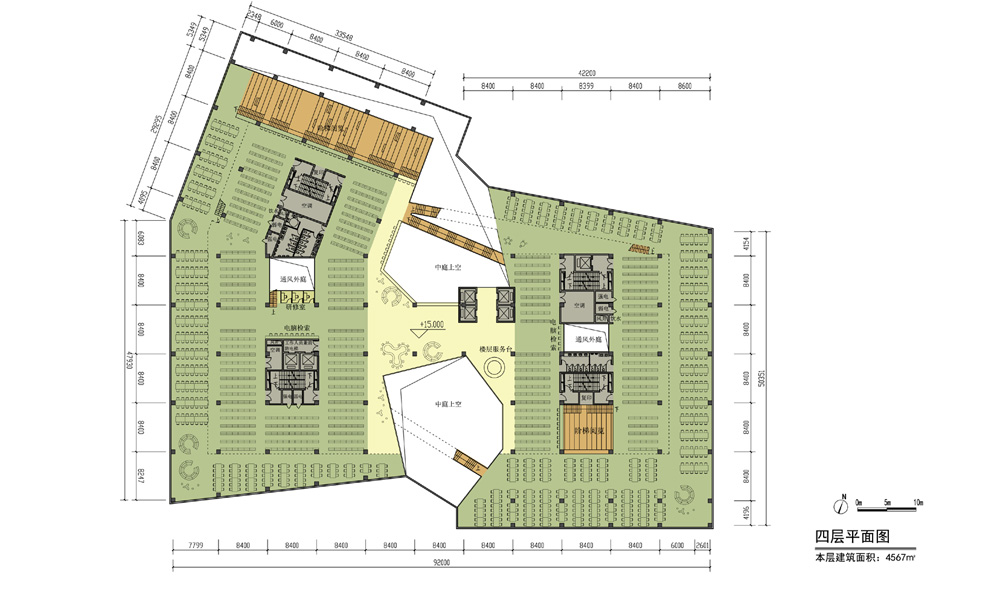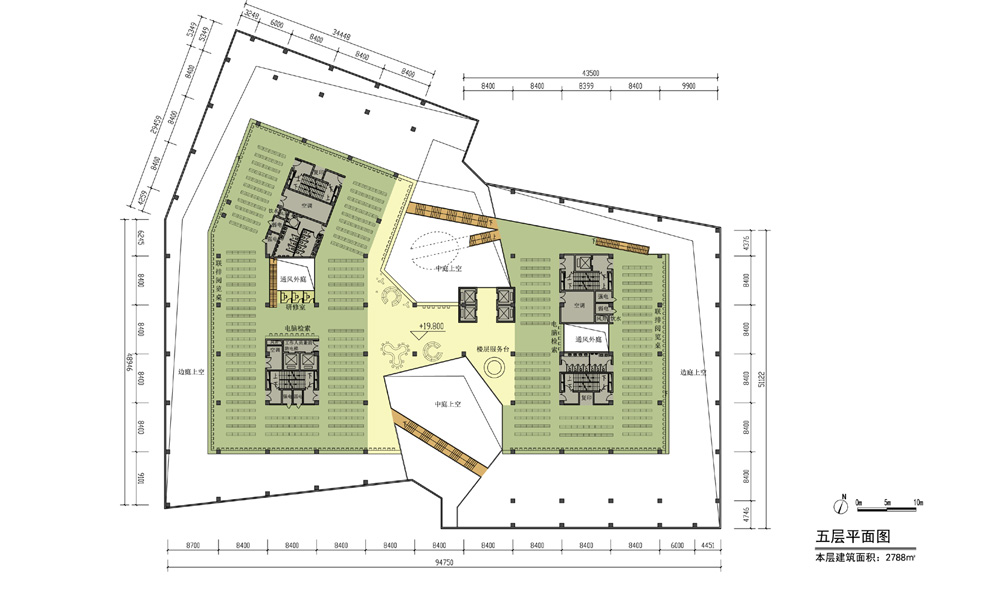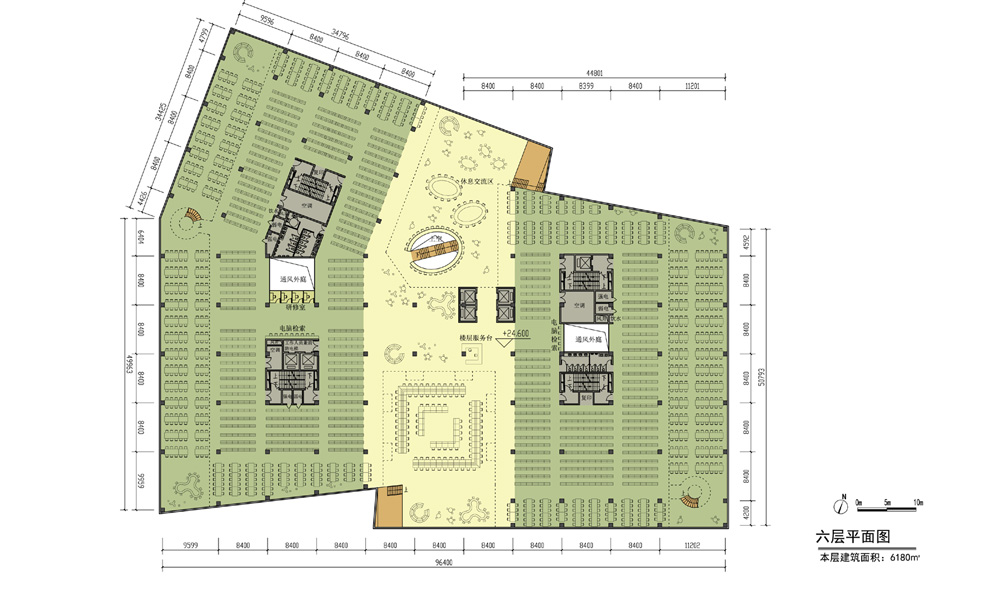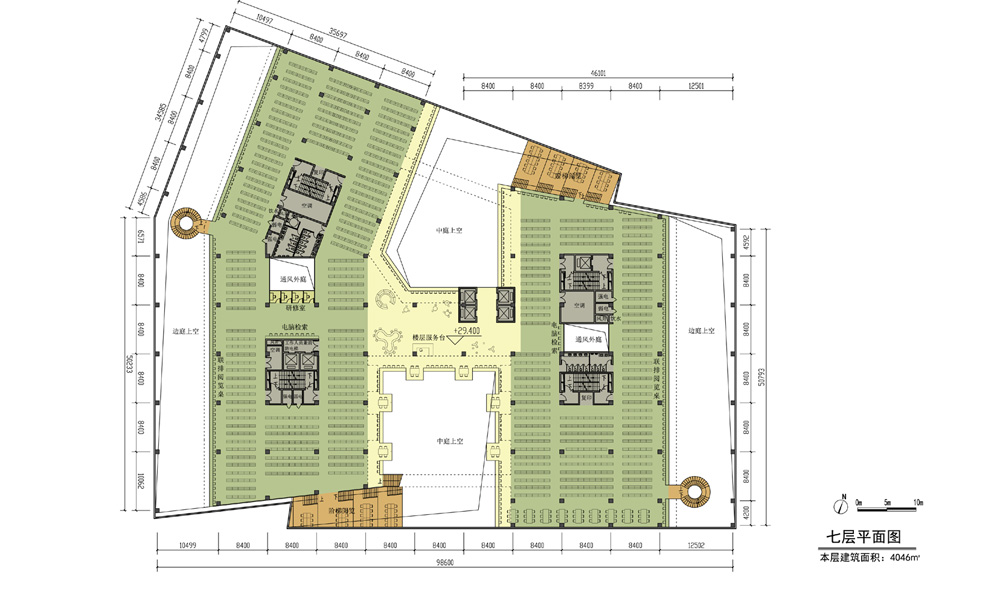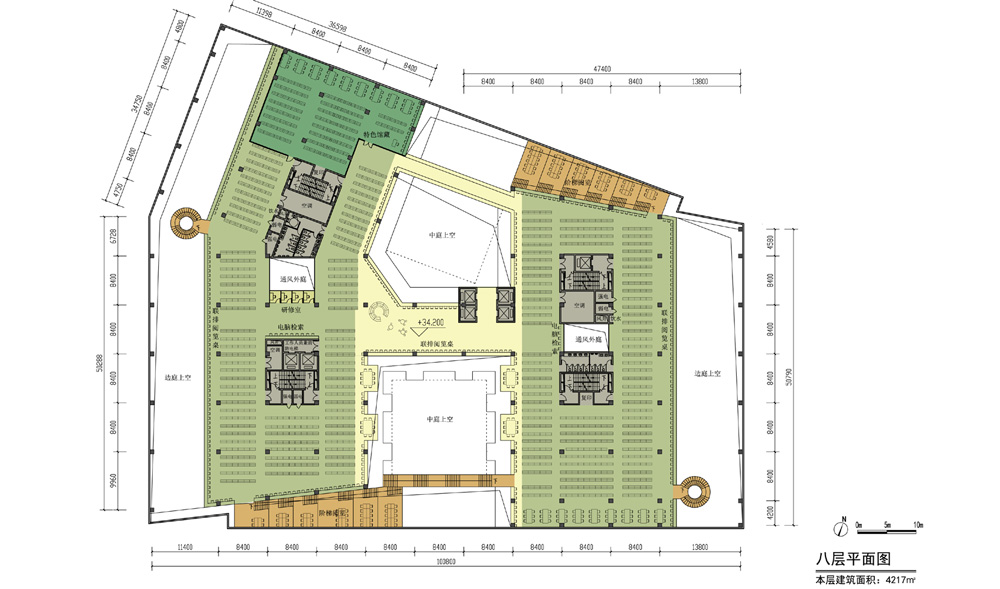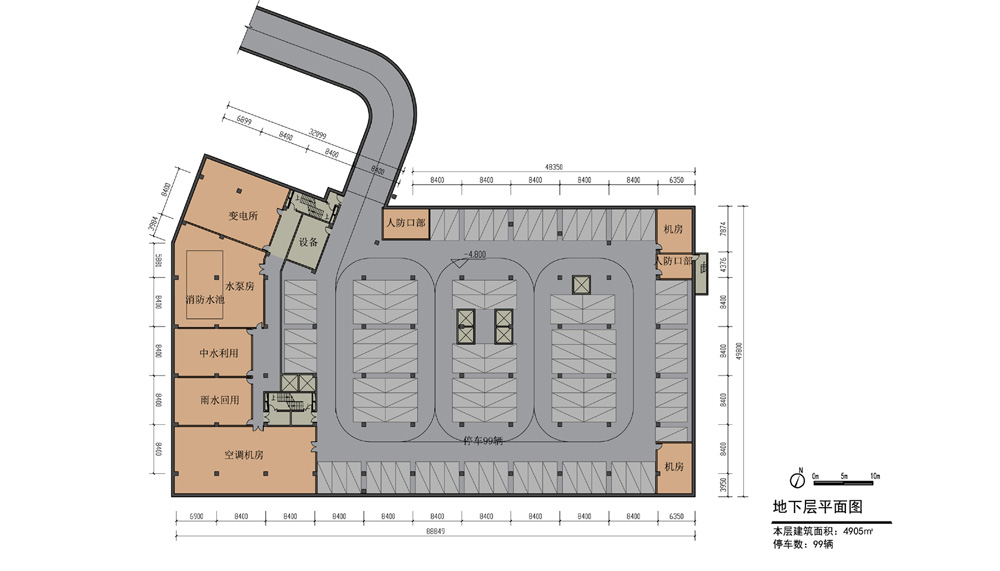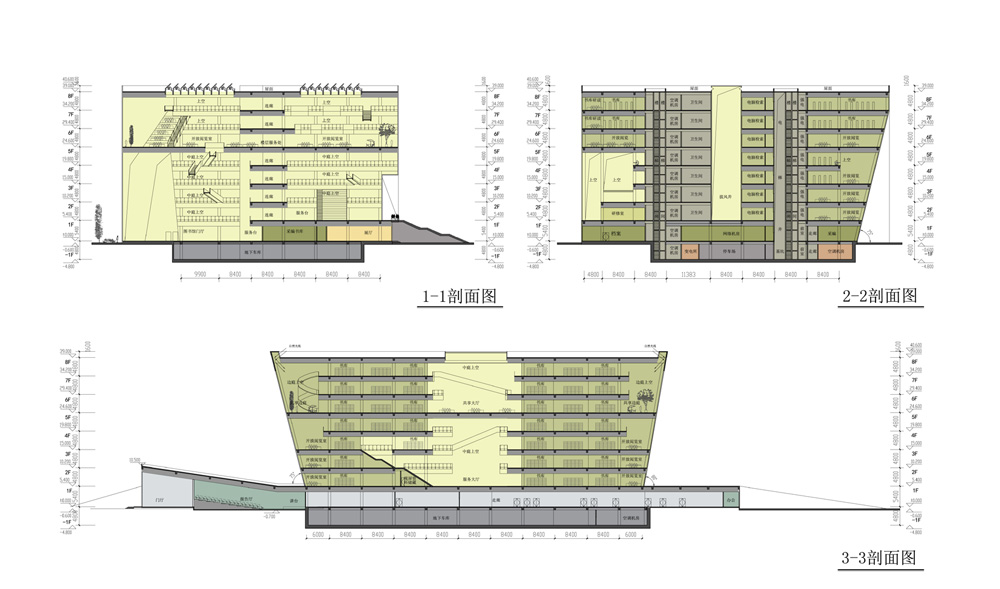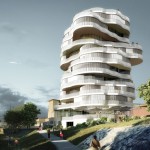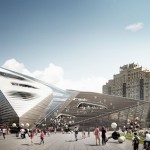
Architect Damian Donze designed Hebei University Library in Tianjing, China and won the competition. The building has 45 290 m2 and is 8 floors (40 m) high. It has space for 2 400 000 books and 4 500 seats. Functionally, the building is clearly divided. More images and architects’ description after the break.

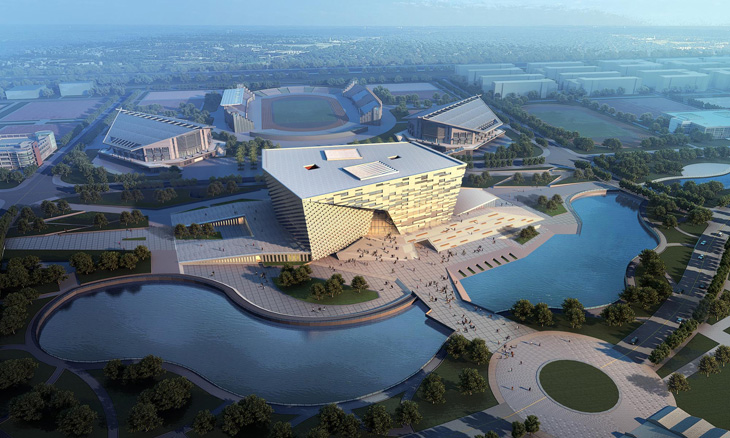
From the Architects:
Library Functions
The library, besides providing functions like an e-reading area, a periodical reading area and a leisure reading area, also contains a variety of study areas. We focused on creating study spaces with a lot of natural lighting. We, therefore, arranged them inside and around the two large atria as well as along the facade. To further improve the quality of the reading spaces along the facade, we created many "Loft" spaces where the ceiling was set back from the facade to generate double/triple height space. This not only adds more natural light for the reading area, but also moves the stacks further away from the natural light which is desirable considering the damaging effect of direct sunlight on books.
Internally, the library is organized in a way so that the functions that are more frequented are on the lower floors while functions which are less frequented are on the top floors. This brings a great improvement in terms of circulation.
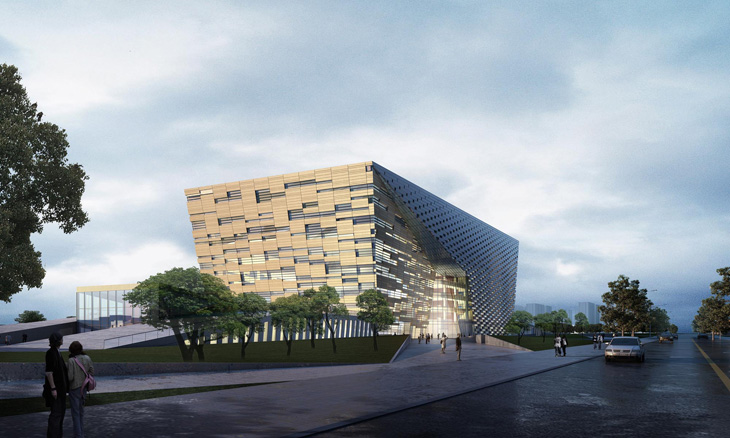
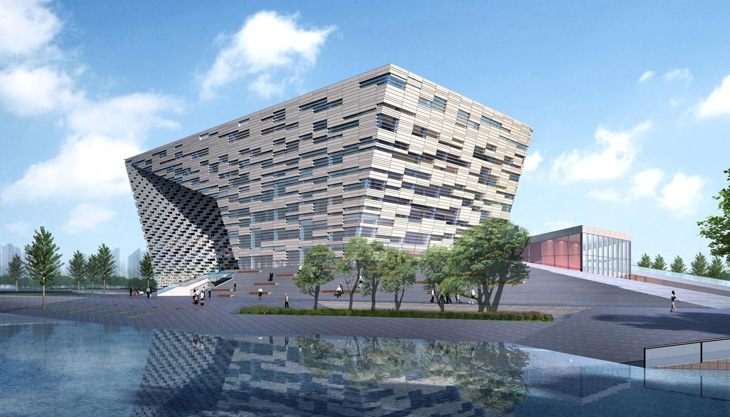
Structure
The basic structure is made of concrete column and beam structure connected with the shear walls of the cores. However, we made use of a steel truss to span the two overhangs in the north and the South.
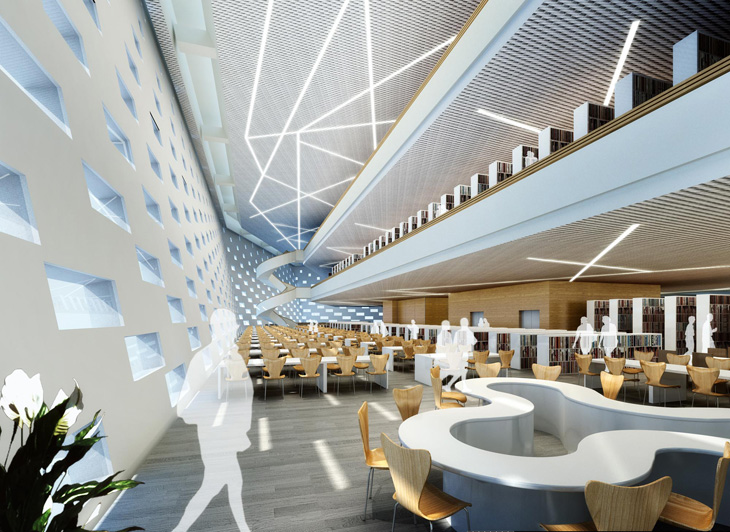
Natural Lighting&Ventilation
The lower atria (floors 2-5) obtain their light through the structural glazing facade while the upper atria (floors 6-8) each have an additional skylight to provide a comfortable reading environment. most of the facade, however, is using standard windows to ensure energy efficiency as well as to control the direct sunlight that enters into the building.
Besides the natural ventilation provided by the facade, we added two shafts on the east side and the West side to provide fresh air for the toilettes and the fresh air rooms.
The building is horizontally divided between the 5th and the 6th floor. The client wants to use the lower part first while opening up the upper part later on.
By thermally dividing the building, we answered to that request and made sure that the lower part can be heated/cooled independently from the upper part during the first phase.
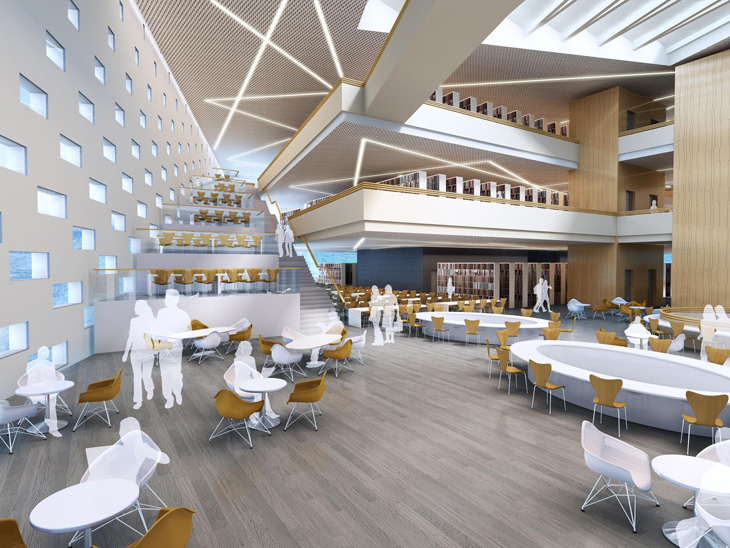
Circulation
Having taken care of the necessary fire evacuation cores in an efficient way, we were able to play with the public circulation. most important are the 4 elevators in the center that provide fast access to (being in the center) to every part of the building and create a strong "backspine" of our circulation system. However, elevators require waiting time and use energy, so we developed an intricate system of public stairs to reduce the traffic for the elevators.
Facade
Looking at the facade of the building, one may easily be reminded of ying and yang. These principles were, in fact, part of our influence. The buildings in the north of the library are made up of a lot of brick and, somewhat, try to imitate the style of the old campus. Hence, we decided to use a similar earthy material, terracotta. The buildings in the South of the library use simple and plain colors. We tried to develope a fitting language for the main South facade to create a smooth transition. our choice fell on a pale natural stone that can create a similar image as the other buildings, yet is of higher quality. With the twisting motion of the two types of the facade were we able to take up the two styles and connect the north with the South/old and new. We also took the interior into consideration, however, which is why the facade has a higher percentage of openings on the lower floors while it closes up towards the top. This action, once again, give more natural light where it is needed (study area) while it protects the books in the compact stacks on the upper floors.
Project: Hebei University Library
Designed by Damian Donze
Project Team: Beichen Campus Library of Hebei University of Science and Technology
Design Team: Wensheng Wang, Damian Donze, Wang Shuyi, Zhang Xü
Site Area: 48 636 m2
Total Area: 45 290 m2
Total Height: 40 m
Location: Tianjing, China
Website: damiandonze.ch


